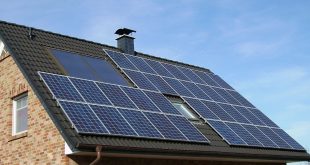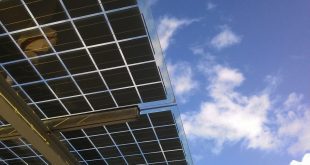It’s always easier to talk about environmentally conscious pursuits than it is to actually put them into action. The subject remains easy to discuss about as studies and research continue to provide a stream of evidence and create a greater sense of general awareness on the issues. However, when it comes to implementing those very same concepts into our daily lives, it can be quite challenging to convert theory into practice.
Keeping a “Circular Economy” Mindset
The idea of a “circular economy” has been developing for a while now. At its core, the goal is to create an economic system in which resources are kept in use until the maximum value has been extracted from them — at which point they are recycled.
While this may seem simplistic, it’s actually a dramatic shift from the more traditional economic mindset, which typically consists of creating something, using it up, and then throwing it away. In fact, it’s estimated that this traditional economy led the largest 5,589 publicly traded U.S. companies to dispose of the equivalent weight of three Empire State Buildings per day in 2014 alone.
To combat this, a circular economy strives to recover unused resources, seek out renewable resources, and find ways to extend product life spans, such as leasing products to multiple users. While the industrial and commercial implementation of a circular economy may seem a bit overwhelming at first glance, it’s actually quite possible to adapt the concept to one’s personal life as well.
If you’re trying to actually live a more eco-conscious life, here are some examples of how others are managing to implement a truly sustainable model of living into one of the largest things we own and use on a regular basis: our homes.
Designing a Home to Function Sustainably
One of the best examples of truly creating a local economic model through a home can be seen in ReACT, which stands for “Resilient Adaptive Climate Technology.” The ambitious project won second place in the U.S. Department of Energy’s 2017 Solar Decathlon competition.
Developed by college students, the $250,000 structure functions as a 1,190 square foot home that completely operates off the grid, maximizing energy efficiency in practically every way possible. This includes:
- Integrated gardens inside and out — the porch can even be turned into a greenhouse.
- Solar panels on the roof.
- A solar energy washer and dryer.
- A composting toilet.
From floor to ceiling, the house takes advantage of every opportunity to be efficient. While there do not appear to be any plans to commercially produce the home at this time, it does boast many technologies that can easily be adapted to individual living spaces in the future.
Considering How We Build
The resources you use in a project should be based on more than just the cheapest option available. Taking into consideration things like the materials and design one uses to build with are excellent ways to implement the circular economic model in your own home.
For instance, the power of post-and-beam architecture isn’t just beautiful to behold; it also allows for fewer materials to be used in the construction process and can create beautiful, large functioning living spaces that are built to last.
Incorporating Solar Power
Individual homes and urban high rises aren’t the only spaces being impacted by the eco-conscious movement. The nonprofit Eden Housing recently dedicated one of its latest apartment complexes — including both townhouses and flats — specifically designed to run on solar power. The solar electricity system for the complex produces over 60,000 kWH every year for the residence.
HouseZero
Finally, we have HouseZero. The ultra-efficient building was retrofitted by the Harvard Center for Green Buildings and Cities at the Harvard Graduate School of Design. The structure isn’t brand new, as is so often the case, but it was built using an existing building that was nearly a century old.
The revamped building uses practically no energy for its heating and cooling needs, does not require electric lights while the sun is up, and is carbon neutral. In fact, the design of the structure was so radical that it is currently projected to create more energy than it uses and eventually even make up for the energy lost in the retrofitting process.
Fixing Your Existing Spaces
As a final encouragement, in the spirit of HouseZero, if you already own a home, there are plenty of ways to make smaller improvements to your existing living space in order to make it more eco-friendly, as well. For instance, consider:
- Repairing leaks quickly and replacing showerheads and faucets with low-flow alternatives in order to conserve water.
- Replace old, inefficient appliances with newer, energy-efficient models.
- Seal drafts and consider installing replacement windows for greater energy efficiency throughout the hot and cold months.
There are many ways that sustainable housing is being developed and enhanced. Some of the more radical options may not be widely available yet, but sustainable change is most certainly taking place across the housing industry. It’s well worth the time and effort for the environmentally considerate to keep an eye on these trends as they emerge and become available in the larger market.
 Alternative Energy HQ solar power for homes, wind energy, and bio fuel issues
Alternative Energy HQ solar power for homes, wind energy, and bio fuel issues








One comment
Pingback: Sustainable Housing Options for the Eco-Conscious